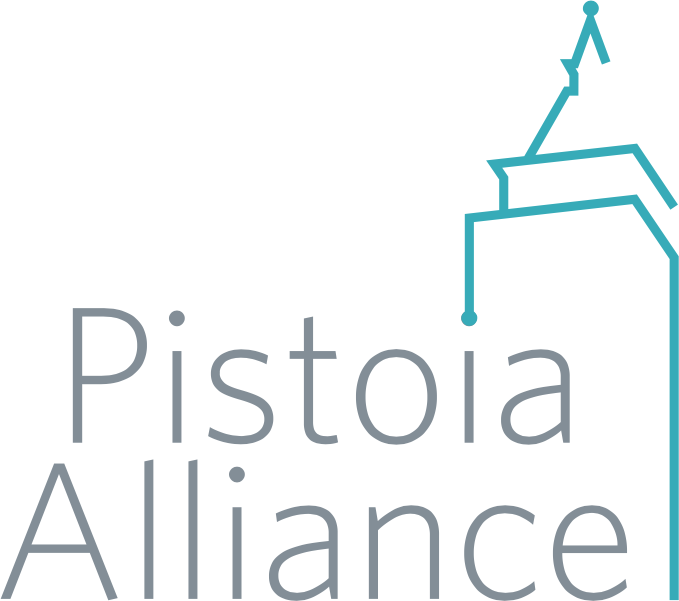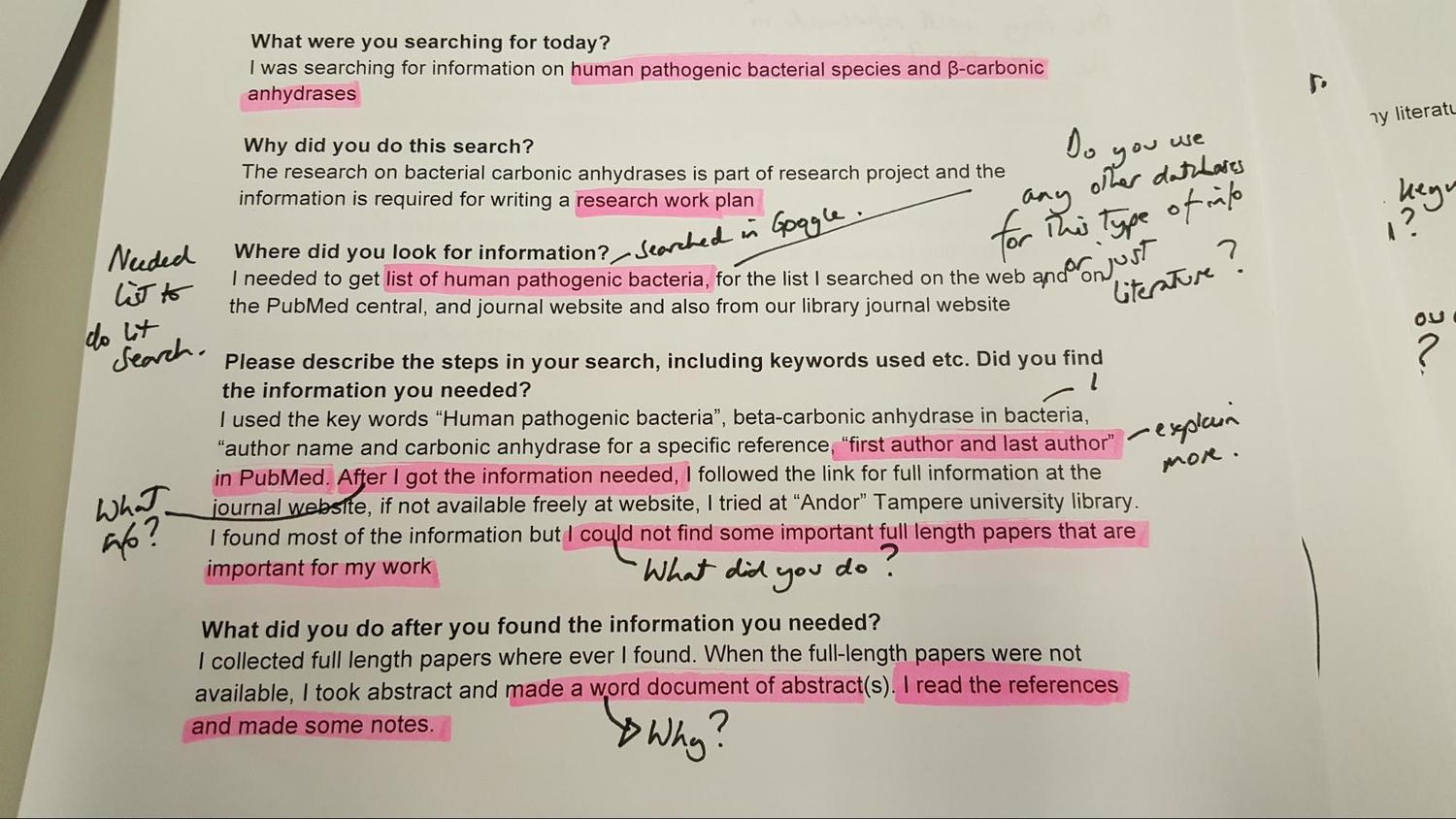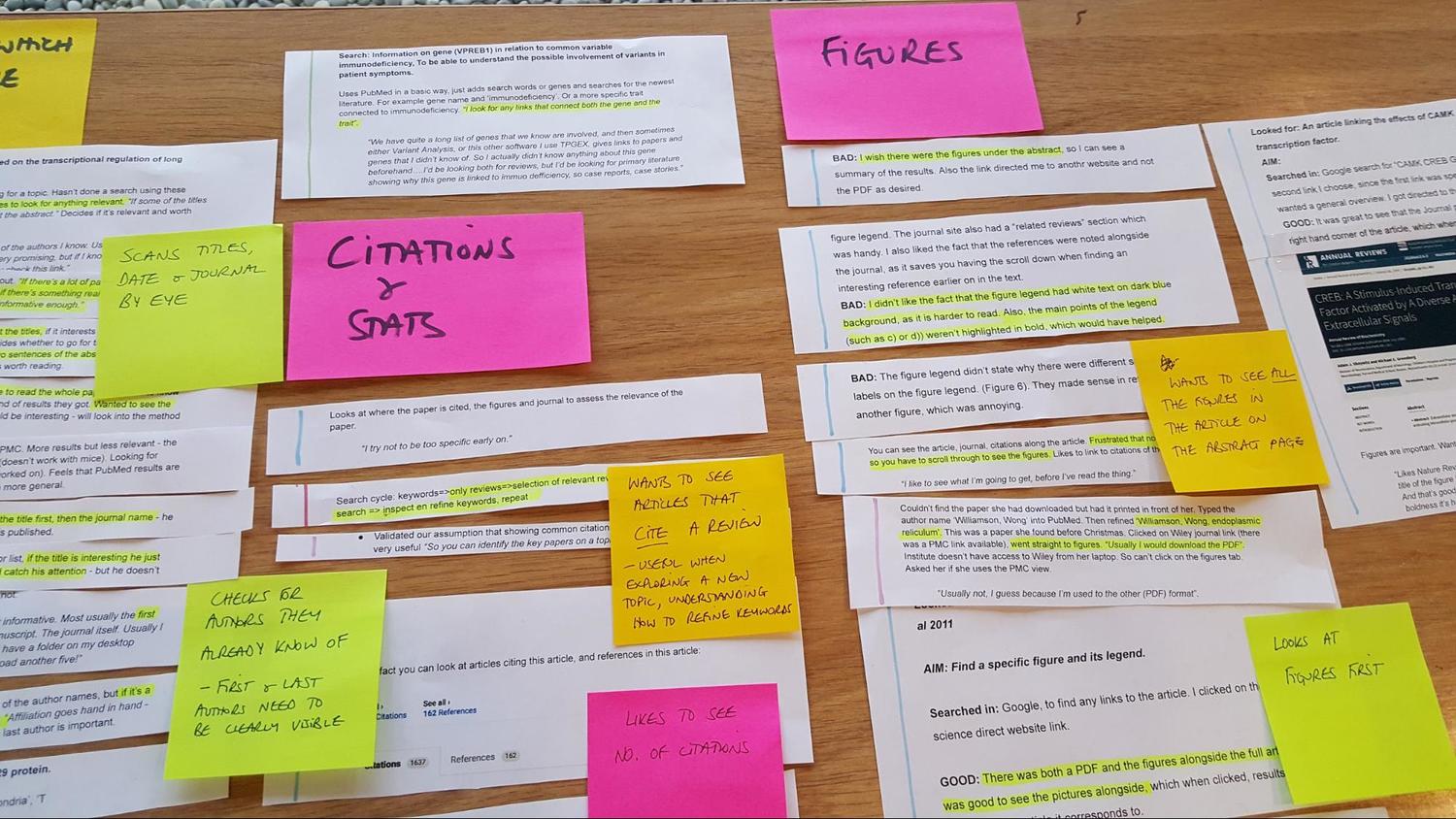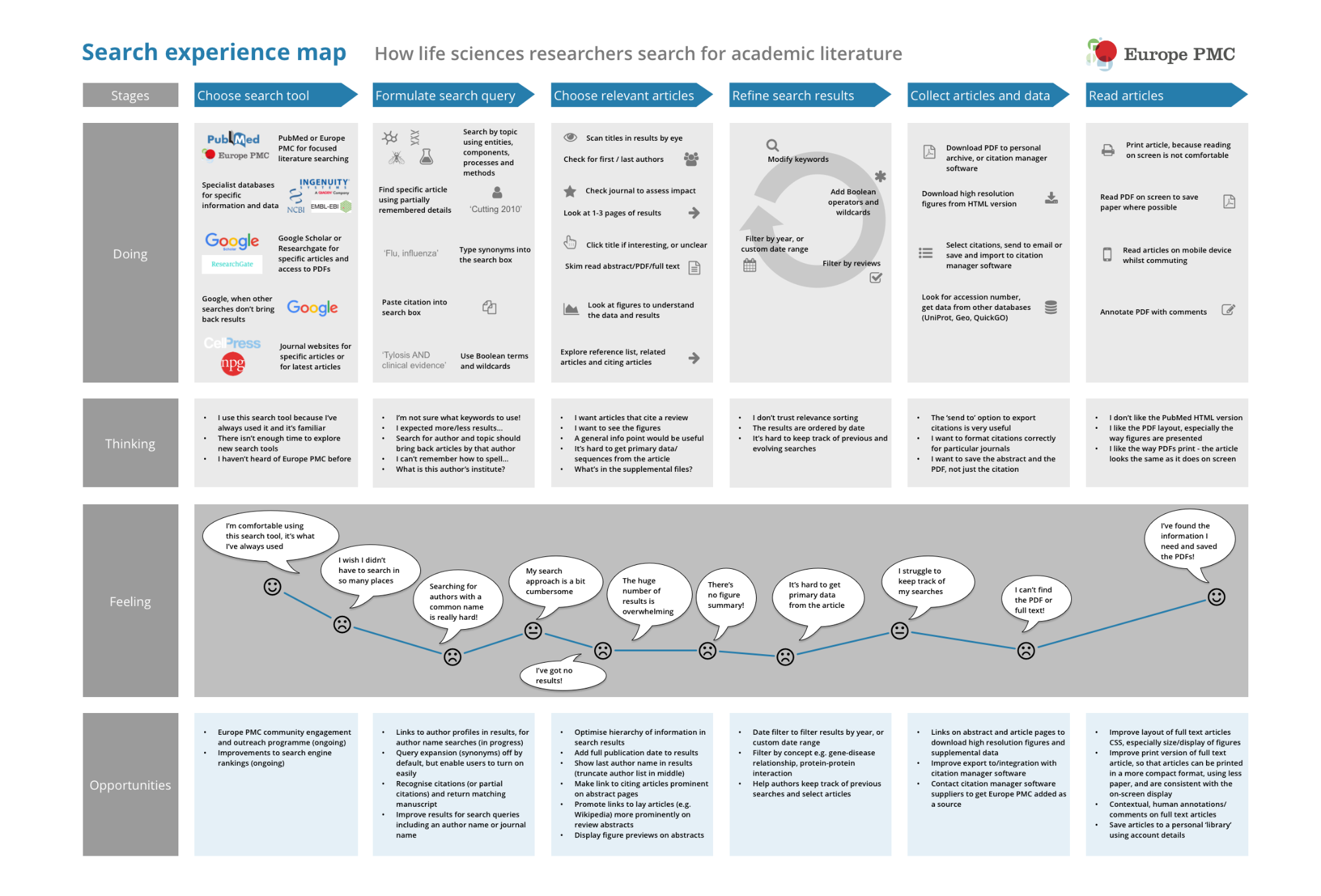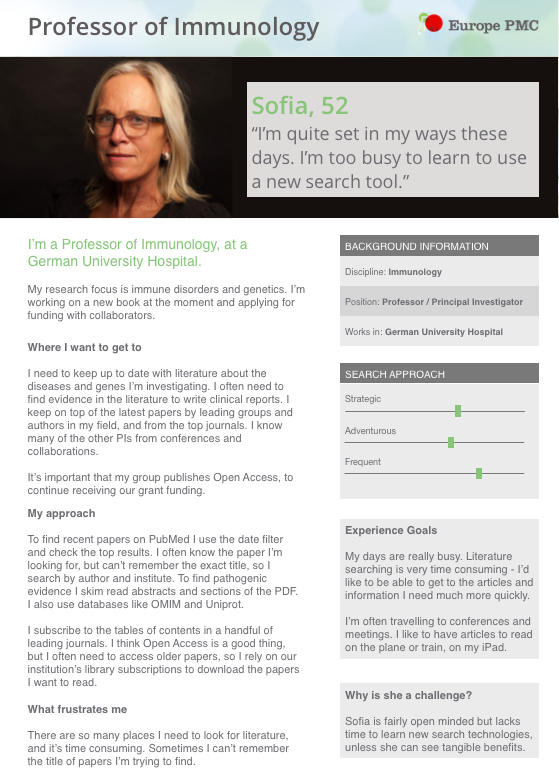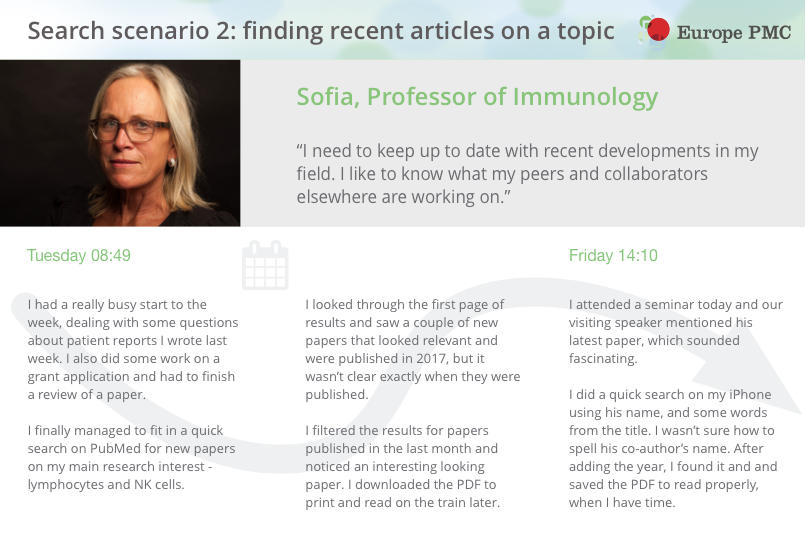Europe PMC personas and scenarios
Europe PMC is a literature search resource for life scientists. The Europe PMC UX team wanted to learn more about scientists’ literature search behaviour, and understand how to build trust in key user communities, to inform a redesign of Europe PMC features and functionality. The goals of the redesign project are to attract new users, increase views of article full text and encourage deeper engagement with the content. The user research included a diary study and usability study.
